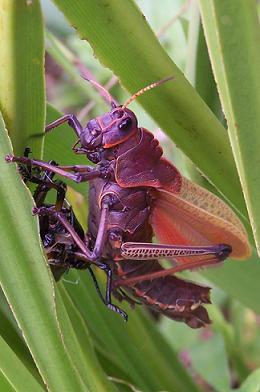My name is Phoebe Buguey, and I am continuing my March post about some concerns and considerations in the International Year of Biodiversity. Previously I discussed how there are a large number of species that have yet to be classified, and I mentioned how this fact is especially unsettling when one considers that species are currently going extinct at an alarming rate. With this sad information in mind, you may be wondering what you can do to make a difference and help preserve biodiversity.

Basilisk lizard (Genus: Basiliscus), Isla Colon, Panama. Phoebe Buguey, 2004.
There are many options available such as donating time and/or financial support to worthwhile causes, and one that I would recommend is the Encyclopedia of Life (EOL, http://www.eol.org/). EOL is the brainchild of E.O. Wilson and the product of a collaboration between professional and citizen scientists. The objective is to document the amazing biodiversity of the planet by utilizing the respective strengths of the two communities. The sheer number of environmental enthusiasts allows EOL to harness the eagerness of the public by asking them to volunteer pictures and any other relevant data about a species. Citizen scientists do their best to identify the subjects of their contributions, and scientists from around the world verify these identifications and curate species pages according to their areas of specialization. I am currently curating the Taeniopoda reticulata page on EOL, and although my strange fascination with this large and purple species of grasshopper is a driving factor behind my decision to volunteer, I am also very proud to contribute to the documentation of our world’s biodiversity.

Freshly molted Taeniopoda reticulata, Isla Colon, Panama. Phoebe Buguey, 2004.
How is the Academy Library Contributing?
The Academy Library plays an important role in the dispersion of biodiversity information since it is a stronghold for both historical and modern systematics literature. Maintaining a relevant and comprehensive collection about biodiversity would be expected of any library supporting researchers with that particular focus, but the Academy Library has gone a step beyond since it is one of twelve scientific repositories contributing to EOL’s cousin project, Biodiversity Heritage Library (BHL). The purpose of BHL is to digitize the legacy literature of biodiversity and make this information available to all. The hope of such efforts is that increasing access to these historical documents will correspondingly increase the continuity of scientific research.

Mating pair of clear winged moths (Family: Sesiidae), Isla Colon, Panama. Phoebe Buguey, 2004.
It may at first be hard to understand how legacy materials could be relevant to contemporary research, but it is important to keep in mind exactly what biodiversity research is: the documentation of both the extinct and extant species diversity on the planet, particularly focused on monitoring the amount of biodiversity in certain areas and any changes therein. In order to understand which species exist today and which species have gone extinct, scientists must have access to historic scientific information. This allows scientists to ensure that species are not named multiple times and that both extinct and new species get documented as such. Since some species have been known for well over 100 years, it may be critical for scientists to have access to this older information in order to establish an individual organism’s species identification. However, since much of this legacy literature is kept in the collections of a few select libraries, it can be difficult and time consuming for researchers to access this data. By digitizing legacy literature, BHL helps scientists quickly retrieve the information they need to do their research, and the Academy Library staff are excited to reach beyond institutional walls in order to support researchers in their important work.